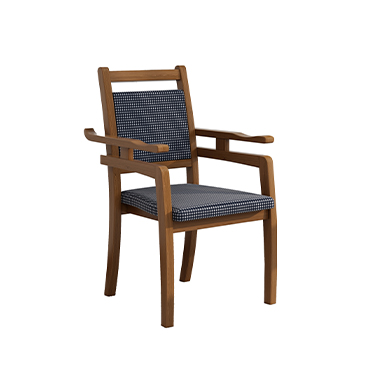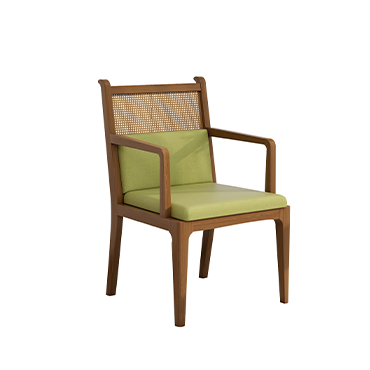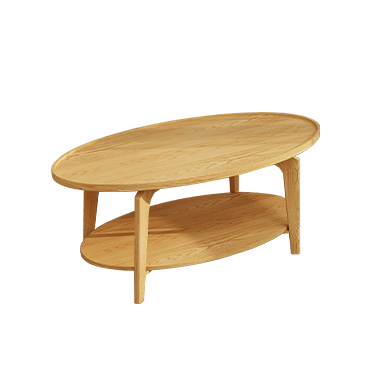How to match the furniture of nursing homes for a more warm feeling?
The matching of furniture in nursing homes is crucial for creating a warm and comfortable living environment. In order to enhance the living experience of the elderly, it is necessary to start from multiple aspects, ensuring that the selection and matching of furniture not only meet the actual needs of the elderly, but also create a strong warm atmosphere. Here are some suggestions to help nursing homes create a more cozy furniture mix:
1、 Color matching
Warm tones are the main color: choose soft warm tones such as beige, light yellow, and light pink as the main color, which can stimulate the sense of belonging of the elderly, reduce loneliness, and create a peaceful and warm atmosphere.
Natural color tone embellishment: In public areas or rest areas, green plants or blue decorative elements can be embellished, such as green potted plants, blue curtains, etc. These colors can evoke nature, bring a fresh and comfortable feeling, help relieve stress, and promote physical and mental relaxation.
The use of contrasting colors: On the basis of maintaining overall color harmony, contrasting colors can be appropriately used for embellishment, such as red sofas, orange pillows, etc. These contrasting colors can attract the attention of the elderly and increase the vitality and fun of the space.
Furniture for nursing homes
2、 Furniture selection and layout
Balancing comfort and functionality:
Bed: Choose a bed with moderate height and suitable mattress hardness to ensure convenient and comfortable getting on and off the bed for the elderly. The headboard can be equipped with adjustable guardrails to increase safety.
Wardrobe: Simple and practical design, reasonable internal structure, convenient for elderly people to store clothes by category. The cabinet door adopts a sliding type to avoid the elderly having to work hard when opening and closing the cabinet door.
Table and chairs: The height of the table and chairs should be suitable for the height of the elderly, and the chairs should have armrests and backrests to provide good support. The corners of the table should be rounded to prevent elderly people from being injured by collisions.
Flexibility and versatility:
Foldable and movable furniture design facilitates the reconfiguration of space and adapts to different activities and needs. For example, a sofa bed can be used as a resting area during the day and as a temporary bed at night.
Furniture with lifting function or electric adjustment can further increase the convenience of use, such as lifting dining tables, electric adjustable chairs, etc.
Emotional care:
The shape and material of furniture can be more friendly, such as rounded corners, soft fabric materials, etc., which can make the elderly feel the warmth of home.
Adding some elements or patterns that elderly people like to furniture, such as flowers, animals, etc., can stimulate their interest and increase the fun of life.
3、 Lighting and Decoration
Lighting Design:
Choose soft lighting to avoid discomfort to the eyes of the elderly caused by glaring light.
In the bedroom or reading area, warm toned lighting can be combined with soft wall colors to create a warm and comfortable reading environment.
In public areas, bright lighting can be combined with neutral tones to ensure the brightness and transparency of the space.
Decorative embellishments:
Hanging some photos or paintings of elderly people on the wall can increase the warmth and sense of belonging of the space.
Placing some green plants or flowers on the table can add vitality and energy, allowing the elderly to feel the closeness of nature.
You can set up some bookshelves or display racks to display books and magazines suitable for elderly people to read, enriching their spiritual life.
Furniture for nursing homes
4、 Precautions
Safety: Ensure the stability of furniture and avoid accidents such as falls caused by instability. The corners of furniture should be rounded to prevent damage from bumps.
Usability: The use of furniture should be simple and easy to understand, in line with the operating habits of the elderly. For example, the placement of chair armrests and headrests should be convenient for elderly people to enter and exit or adjust their posture.
Hygiene: Furniture materials should be easy to clean and resistant to bacterial growth. Choosing antibacterial materials or surfaces with anti fouling coatings can reduce hygiene hazards.
In summary, the matching of furniture in nursing homes needs to start from multiple aspects such as color, furniture selection and layout, lighting and decoration, and pay attention to the actual needs and emotional care of the elderly, in order to create a warm, comfortable, and convenient living environment.






